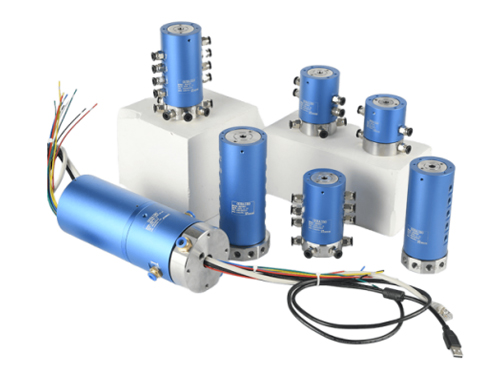Information
Focus on RHD Precision Industry - Get to know the new information of the industry quickly!

2025-09-17 15:35:34
Rotary joints, also known as Rotary Unions, are essential mechanical devices that facilitate the transfer of fluids, gases, or electrical signals between stationary and rotating parts of machinery. These components play a crucial role in various applications, from industrial machinery to aerospace systems, where continuous rotation is required without compromising the integrity of the connection. This article explores the design, functionality, types, applications, and advantages of rotary joints and rotary unions.

A rotary joint is a mechanical device that allows the smooth transmission of fluids or gases while enabling rotational movement. It typically consists of a stationary part and a rotating part, which are connected by a series of seals and bearings. The primary function of a rotary joint is to provide a leak-free connection during rotation, ensuring that the fluid or gas flow remains uninterrupted.
The operation of a rotary joint involves several key components:
Stationary Housing: This part remains fixed and is often mounted to the machine frame. It contains the inlet and outlet ports for the fluid or gas.
Rotating Element: This part is connected to the rotating machinery, allowing for continuous movement while maintaining the fluid or gas flow.
Seals: Seals are critical for preventing leaks between the stationary and rotating elements. They can be made from various materials, such as rubber, plastic, or metal, depending on the application.
Bearings: Bearings facilitate smooth rotation and help reduce friction between the stationary and rotating parts.
There are several types of rotary joints, each designed for specific applications:
Single Passage Rotary Joints: These joints allow the flow of a single fluid or gas and are commonly used in applications where only one type of media is required.
Multi-Passage Rotary Joints: These joints can accommodate multiple fluids or gases simultaneously. They are often used in complex systems, such as those found in manufacturing processes.
Electrical Rotary Unions: These devices combine rotary joints with electrical connections, allowing for the transmission of power or signals while rotating. They are used in applications like robotics and rotating machinery.
High-Temperature Rotary Joints: Designed to withstand extreme temperatures, these joints are used in applications such as steam systems and industrial ovens.
Fluid Rotary Joints: These joints are specialized for handling various fluids, including hydraulic oils, water, and chemicals.
Rotary joints are widely used across various industries due to their versatility and reliability. Some common applications include:
In manufacturing processes, rotary joints are used to transfer hydraulic or cooling fluids to rotating machinery, such as lathes and milling machines. They ensure that these machines operate efficiently without overheating.
In the aerospace industry, Rotary Unions are critical for transmitting fuel, hydraulic fluids, and electrical signals to moving parts, such as landing gear and engine components. Their reliability is paramount due to the high-stakes nature of aerospace applications.
Robotic systems often require rotary joints to enable movement while maintaining power and signal transmission. Rotary unions are essential for servos and actuators that need to rotate continuously.
In wind turbines, rotary joints are utilized to transfer hydraulic fluids for pitch control and braking systems. Their ability to withstand harsh environmental conditions makes them ideal for such applications.
In medical imaging systems, such as MRI machines, rotary joints allow for the rotation of imaging components while maintaining fluid and electrical connections. This ensures accurate imaging without interruptions.
The use of rotary joints offers several advantages:
Rotary joints facilitate continuous rotation without the need for physical connections, reducing wear and tear on mechanical components.
High-quality seals and bearings ensure that rotary joints maintain a leak-free connection, preventing fluid loss and contamination.
Rotary joints can be designed for various applications, accommodating different fluids, gases, and electrical signals, making them versatile for many industries.
The compact design of rotary joints allows for efficient use of space, making them suitable for machines with limited room for components.
With proper maintenance, rotary joints can provide long-lasting performance, reducing the need for frequent replacements and downtime.
When selecting a rotary joint for a specific application, several factors should be considered:
Identify the type of fluid or gas to be transferred, as different materials and seals are required for various media.
Ensure that the rotary joint can withstand the operating pressure and temperature of the application to prevent failure.
Consider the maximum rotation speed of the application, as this can impact the longevity and performance of the rotary joint.
Evaluate the maintenance needs of the rotary joint and ensure that it aligns with the operational capabilities of the facility.
Ensure that the selected rotary joint fits within the available space of the machinery or system.
Rotary joints, or rotary unions, are indispensable components in many modern industrial applications. Their ability to facilitate the seamless transfer of fluids, gases, and electrical signals while allowing for continuous rotation makes them vital in manufacturing, aerospace, robotics, and more. Understanding the various types, applications, and advantages of rotary joints can help engineers and designers select the right components for their systems, ultimately enhancing performance and reliability.
As technology advances, the design and functionality of rotary joints will continue to evolve, offering even more efficient solutions for the challenges faced in various industries. Whether for high-speed machinery or delicate medical equipment, rotary joints remain a cornerstone of modern engineering, enabling seamless operation and innovation across the board.

Phone: +86 13622631318
Email:info@reehonde.com
Add: Room 301, Building 1, No. 11, Dalingshan Lakeside South 1st Street, Dalingshan Town, Dongguan City, Guangdong Province, China
Copyright © 2025 Dongguan Rui-Hong-De Precision Industry Co., Ltd All rights reserved. Privacy policy | Terms and Conditions